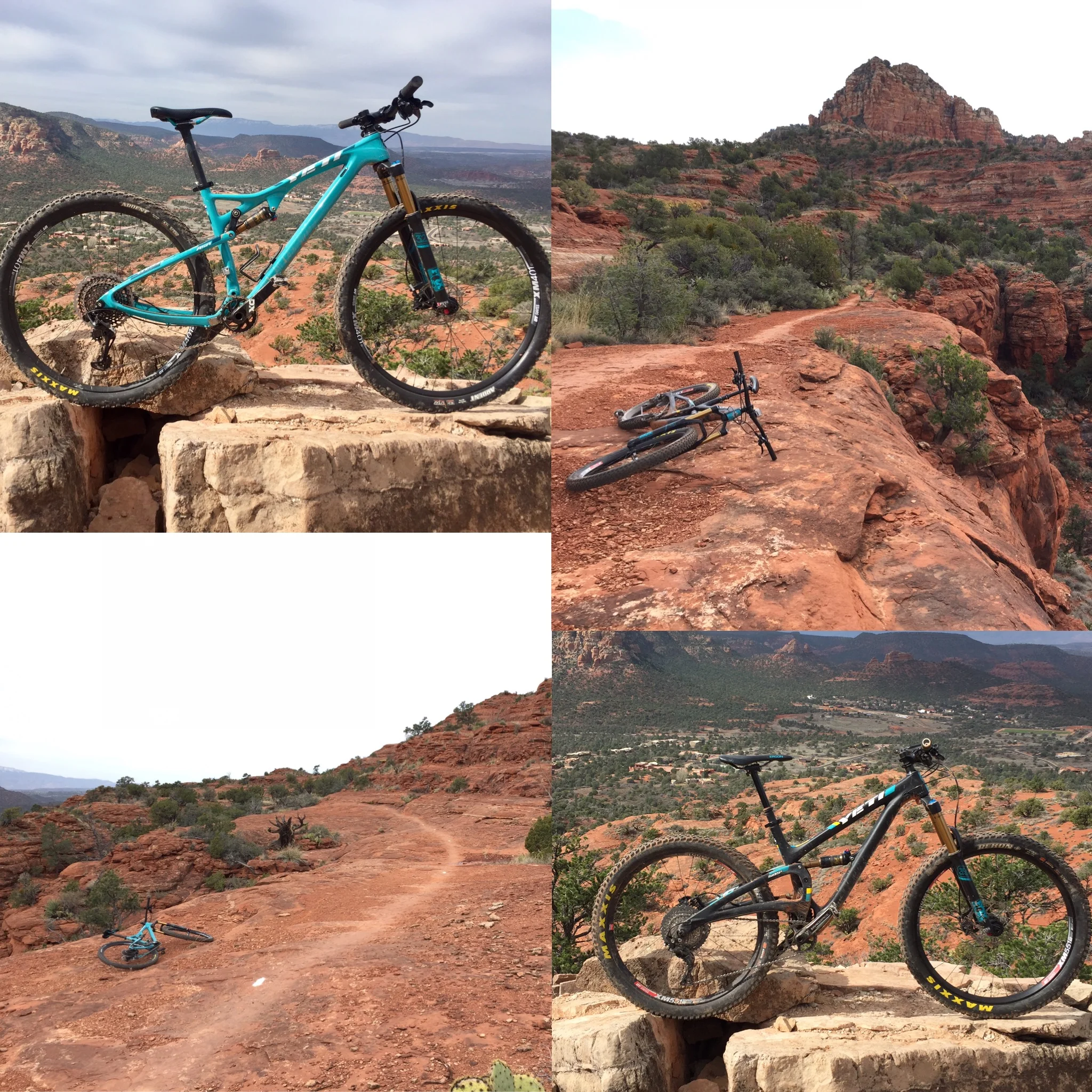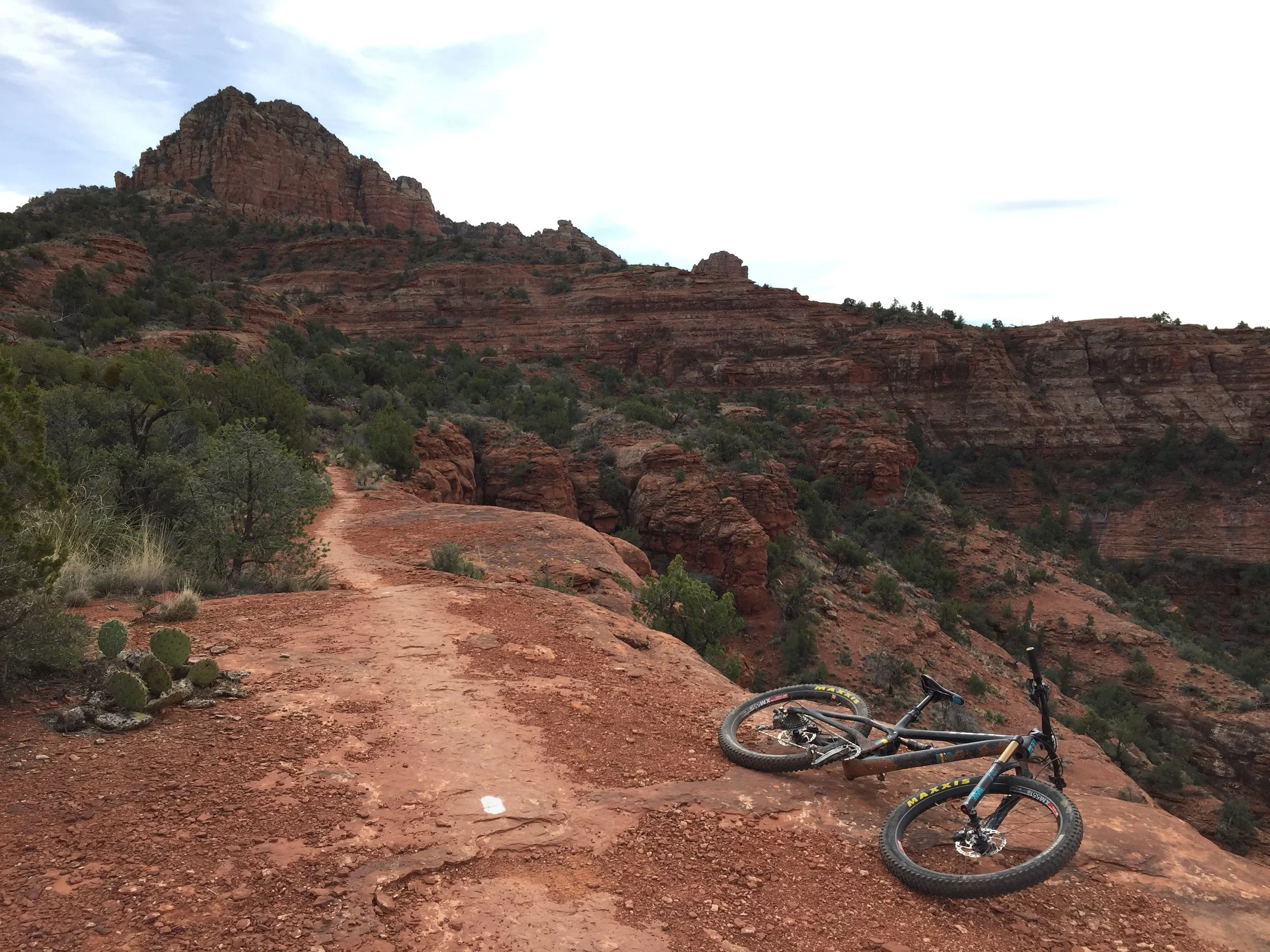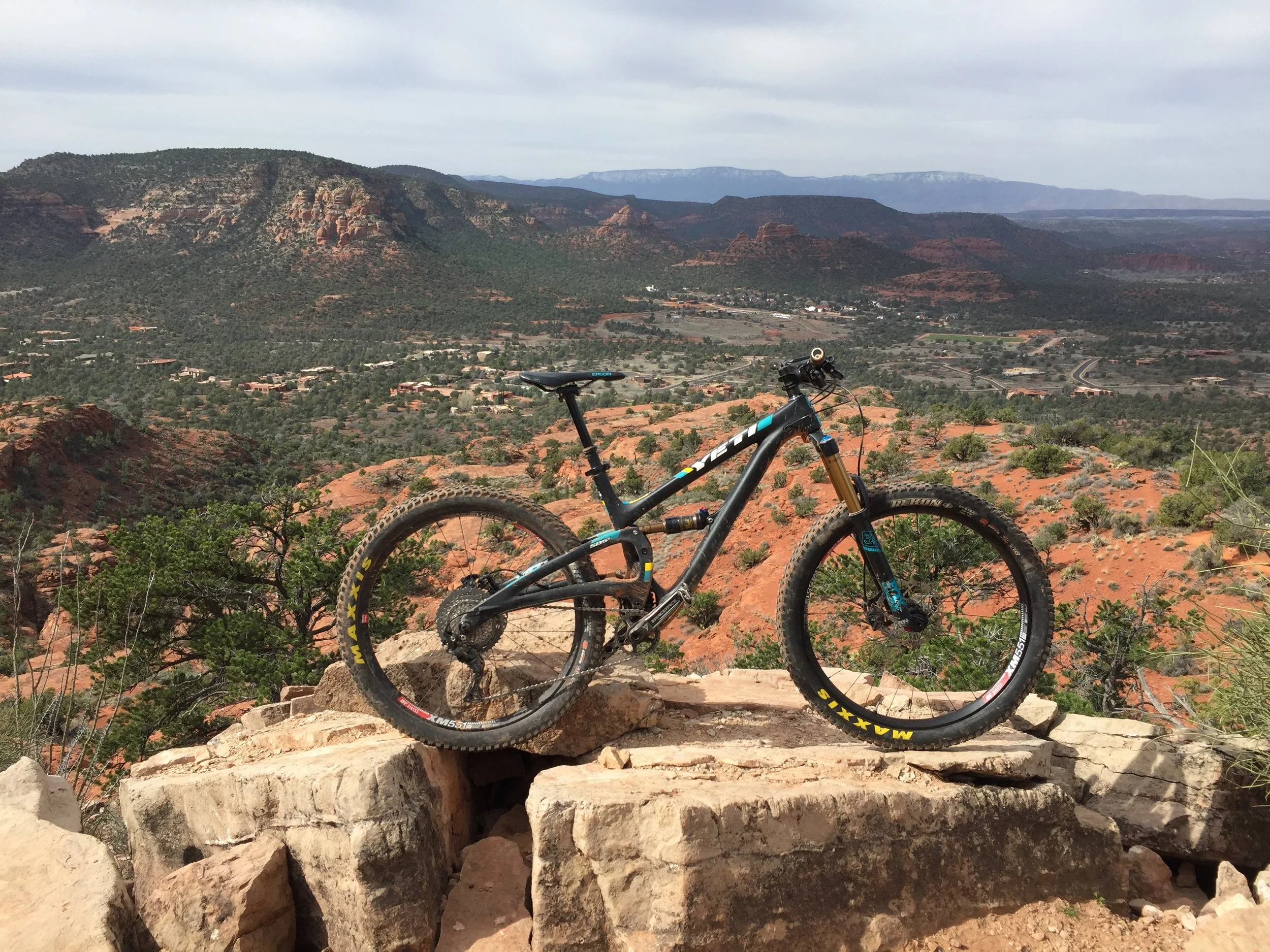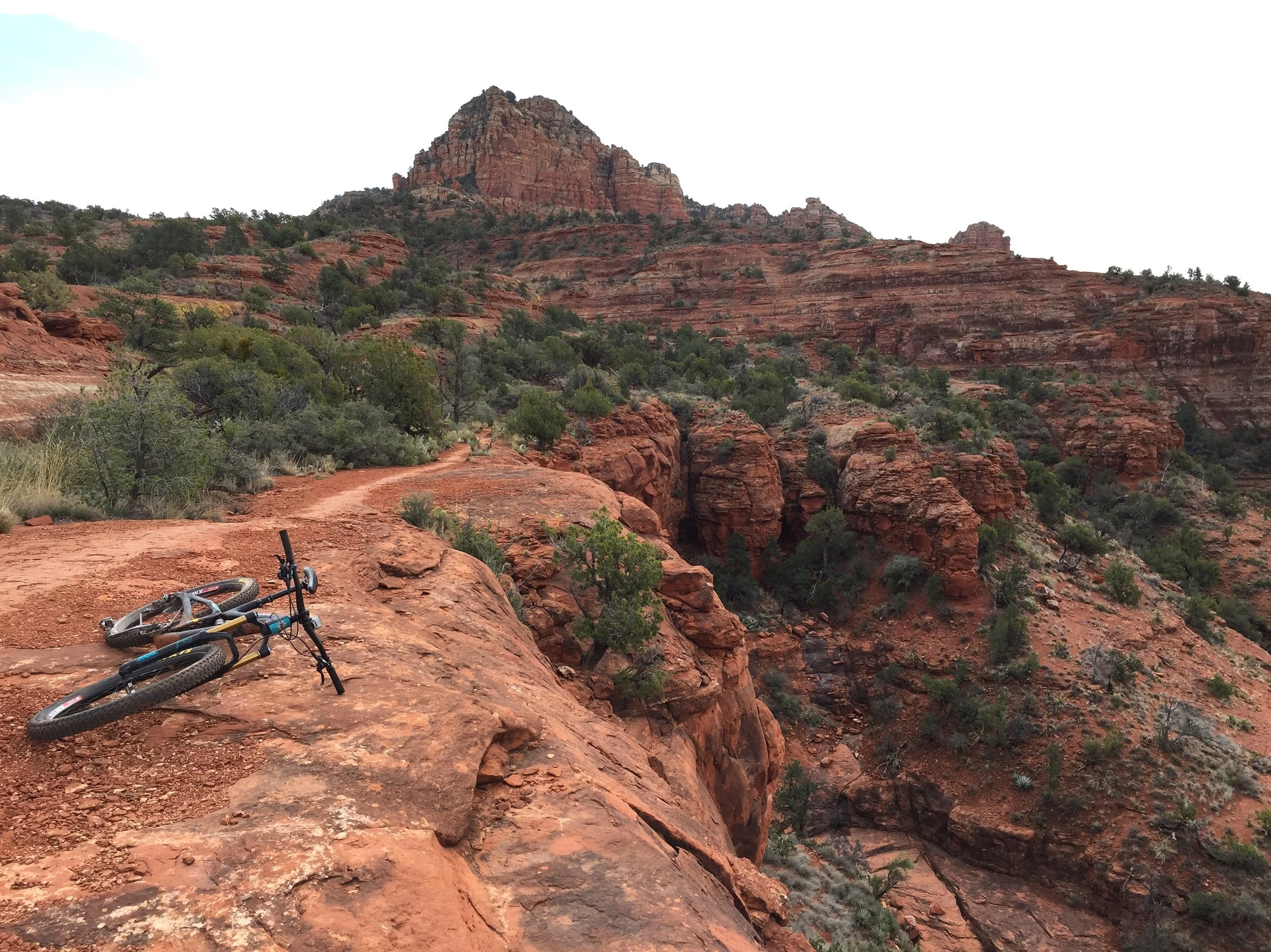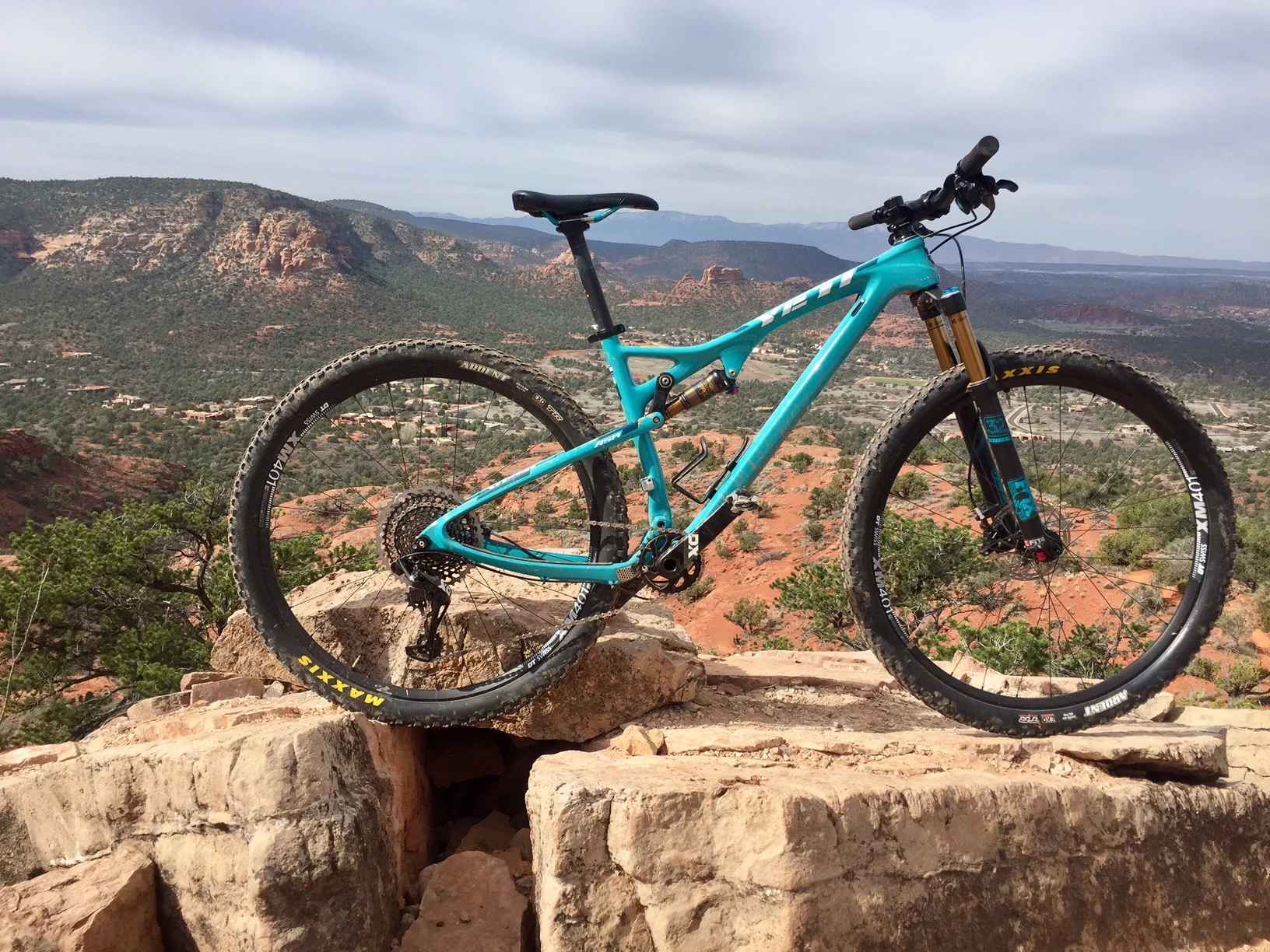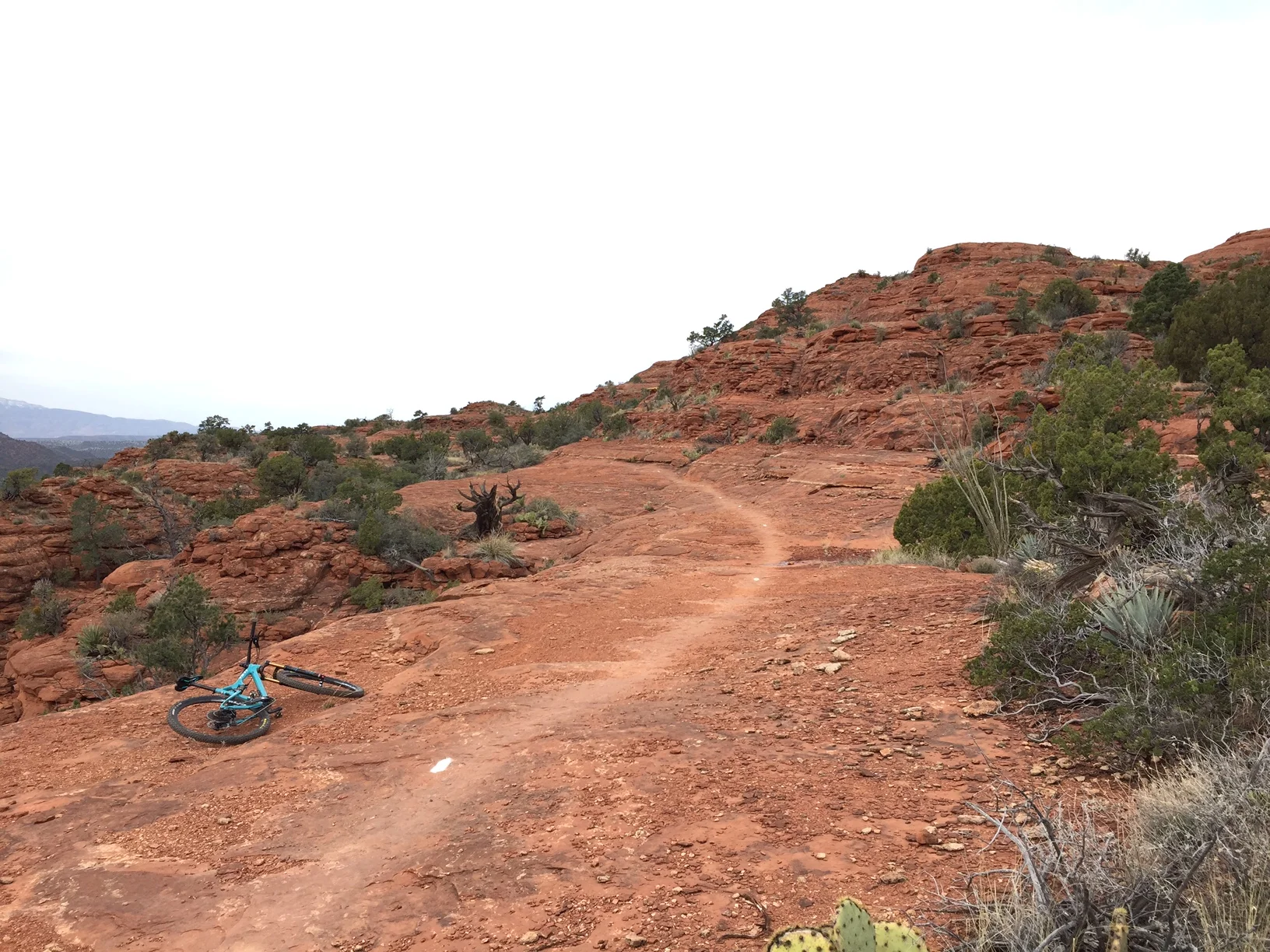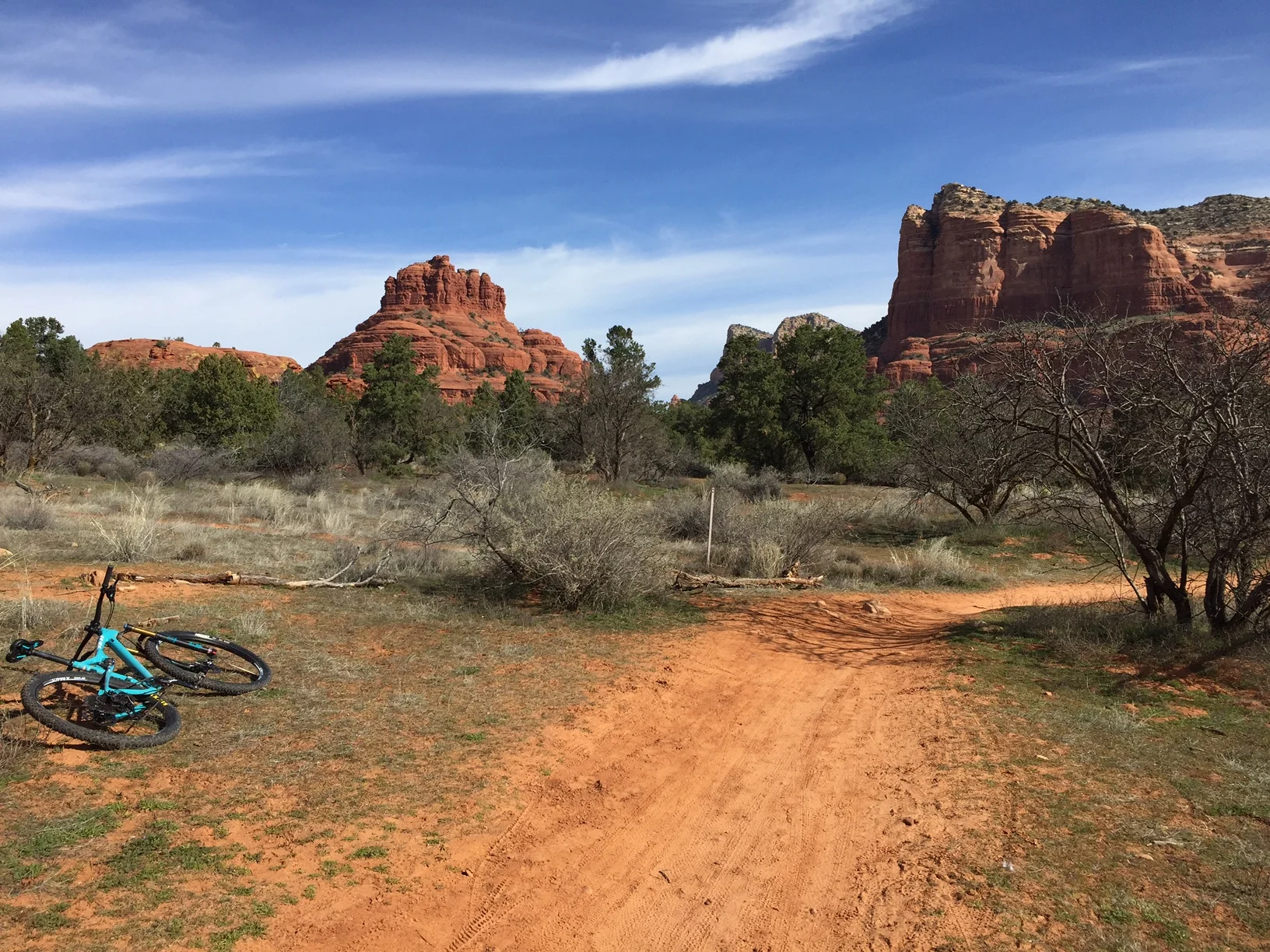As stated previously in the Santa Cruz Tallboy 3 27.5 Plus review, I am not a professional cyclist and I do not work at a bike shop or in the bicycle industry in any capacity, so the views expressed are strictly my own. With that said, I greatly appreciate how many of you have visited the site and contacted me regarding my posts on the Tallboy 3, so I felt I would try and contribute a little further with an additional $0.02 on other bikes one might consider and takeaways from current mountain bikes in general.
Getting up a few minutes earlier to make sure I got the bike I was most interested in trying paid off in being able to take out the Yeti SB5+ (and Yeti ASR for my riding partner).
Yeti SB5+
The SB5+ has gotten a fair amount of buzz and press of being one of the best in the increasing 27.5+ do-it-all trail bike category. And I think it might be the only one with elevated chain stays to increase tire clearance but not compromise bottom bracket stiffness. With 150 mm of travel up front and 127 mm (5") in the rear, it pedals well for a bike of this much travel. Models start at $4599 for their entry level of carbon and a Shimano XT/SLX build kit with Fox Performance level suspension.
Thoughts
This gauge is crucial for dialing in tire pressures if your'e considering plus or fat bike setups
The common theme for the weekend despite telling reps a lower than actual weight and stating my desired tire pressure, was too much air in the shocks and tires. The SB5+ might have been the worst victim of this, basically bucking me off of my first switchback to rock step up even though I had already lowered pressures after leaving the booth. This made for a bit of a rough start with the Yeti as I was partially fighting the bike while riding up a trail that demands your full attention to being with, Hiline. The bike was also one of the shortest bikes reach wise I rode all weekend, with a steep seat tube to boot. Part of the first hour of riding was reminding myself to shift my weight back any time I punched it a bit or got out of the saddle at all, as that short position tended to get my weight too far over the front end, which contributed to the handling woes. Once I finally got comfortable, used to forcing my position to the rear of the bike, and the fork, shock, and tire pressures dialed in I started to be rewarded with a more fun and capable bike.
I can't say I felt a difference from the Switch Infiniti system, but I think that's the point in making the bike soak up small bumps and deliver pedaling efficiency. As this review indicates, the bike just didn't feel quite as alive overall or didn't quite have that "distinctly Yeti feeling" so many rave about. I would put the overall feel somewhere in between the narrow range of difference between the more active Ibis Mojo 3 and my current Tallboy 3, not feeling as quite of a sure footed pedaller as the Tallboy, but not quite as active and bottomless as the Mojo. In reality, all three of these bikes (and the Santa Cruz Hightower+) are very good and very close, it really just comes down to your spec preference and what other tire/wheel size you may want to run.
Speaking of that, the Yeti SB5+ is strictly built around 27.5+ tires, so there are no flip chips (Yeti actually kind of scoffs at that concept) meaning that this is a one trick pony, and that is certainly not a bad thing, because even a big ride on this never had me wishing for skinnier tires. The bike ripped, jumped, and carved over the downhill and red rock sections of the Hiline descent, putting a big grin on my face while doing it. Taking advantage of the smooth rolling big rubber and carving across the desert is where this bike shines.
Conclusion
The SB5+ was probably the bike I was most looking forward to riding with so much praise coming from the teal brand's lineup lately. Within the really competitive and very good plus size trail bike category though, this one has some tough opponents. I would say it is not quite as good of a pedaller or have as snappy of a feeling as the Tallboy 3, it's not quite as active or putting that big grin on your face as the Ibis, and maybe a little less of a big ripper than the Hightower, which it does pedal better than. With so many good bikes in Yeti's lineup, I would definitely consider a 4.5 or 5, but I think I would personally look elsewhere in the plus sizes. The tester functioned okay overall, with a little knocking coming from the bottom bracket, but with a demo bike, you really can't hold that against it. I do have concerns over the maintenance and lifespan of the Switch Infiniti system despite Yeti saying they deliberately tested it for years in brutal conditions without touching it just to put it through its paces.
Yeti ASR
Speaking of bikes without the Switch Infiniti system and on standard width tires, the ASR might have been the biggest surprise of the weekend. After departing with my Specialized Epic (4" full suspension, XC-oriented 29er) to my Tallboy 3, I have not once looked back on the world of racy, shorter travel efficiency machines. But if I did, the ASR would be the first place I would look. Maybe it was because I was coming from the 150 mm front / 127 mm rear travel SB5 plus bike, but this thing was a rocket, and without compromising fun and handling. With 120 mm of travel in the front and 102 mm in the rear, the bike was light, efficient, stiff, but still really fun! I always admired the Epic's efficiency and quick handling, but I also kind of felt like it was out to kill me being far more demanding of cornering, line selection, and bike handling skills overall. The ASR combined that efficiency and handling with a bike that was still capable of being thrown off rock drops and had more overall trail stability and handling forgiveness.
Thoughts
A $4000 (MSRP) XT/SLX kit gets you in the door at a little over 26 pounds, which is pretty impressive. The bike we rode was the next option up, a 25.9 pound, SRAM Eagle X01 12 speed bike for $4899. Considering my 2012 aluminum Specialized Epic Comp 29er was around $3400 MSRP (it is now $2800 MSRP) and weighed 29 pounds, this thing looks like a bargain! Granted componentry has trickled down, weights have come down, and that was 5 years ago, but a 25 pound Eagle X01 equipped bike this good would be right near the top of my list if I were shopping for a short travel bike again. You can drop weights further by opting for one of Yeti's higher end TURQ carbon frames, which come in just under a pound lighter.
The bike was perhaps a little mismatched riding back from Hiline up Slim Shady with a few rock gardens, step ups, ledges, etc., but it maintained its composure despite lacking the suspension of most of the flat pedal 6+ inch bikes whizzing by. In the wide open sections it was fast and playful, sure footed and never felt twitchy. Both my buddy and I thought this bike would be killer with a little more travel in the rear, though that's where Yeti lines up the 4.5, which increases fork travel up to 140 mm and bulks up the weight with the addition of the Switch Inifiniti.
Conclusion
Despite being "XC Oriented" this bike was a lot of fun. The light weight and efficiency made it a blast to push faster, especially when rolling across the wide open red rockor smooth, twisty dirt single track sections of Baldwin and Templeton back towards the Yavapai Vista Trailhead. But the great thing about this bike is that it didn't compromise if you wanted to take out on the trail riding excursion. It was still very playful and handled more like a trail bike than a race bike, and I mean that in a good way. Had I had this bike instead of the Epic, I might not have been in the market to switch. It's plenty racy when you need it, but playful for everyday.
Although it doesn't really apply to this bike specifically, the ASR was the second bike I've ridden with the SRAM X01 Eagle 12-speed group on it, and I can't say enough about how impressed I am with how well it shifts. I'm usually a bit skeptical of SRAM products overall, but this group shifts even better than any 11-speed group I've ridden and I like that extra massive cog. Two of my main takeaways from the weekend were that I think I can say I prefer SRAM groups on the mountain bike, and that Eagle is legit. The shifting feel of the SRAM mountain groups feels "right" to me. Maybe it's because it's what I'm used to riding, but the lever feel and shifts have enough tactile and audible feedback while still being very crisp, precise, and smooth. Whereas the 11-speed Shimano groups tended to feel very mechanical and lacking finesse, which is kind of the opposite of what you'd usually think of when comparing the two. Back to the dinner plate on the rear wheel, Eagle is expensive, but it works, and I'm very impressed. I liked that the gaps between gears is less than on 11-speed with a more natural pedal feel, and being that I tend to prefer to spin a higher cadence, that super easy gear was welcomed on longer climbs.
